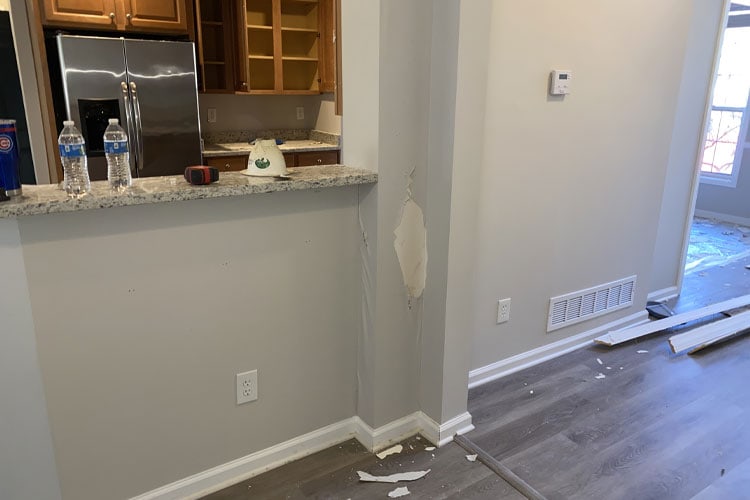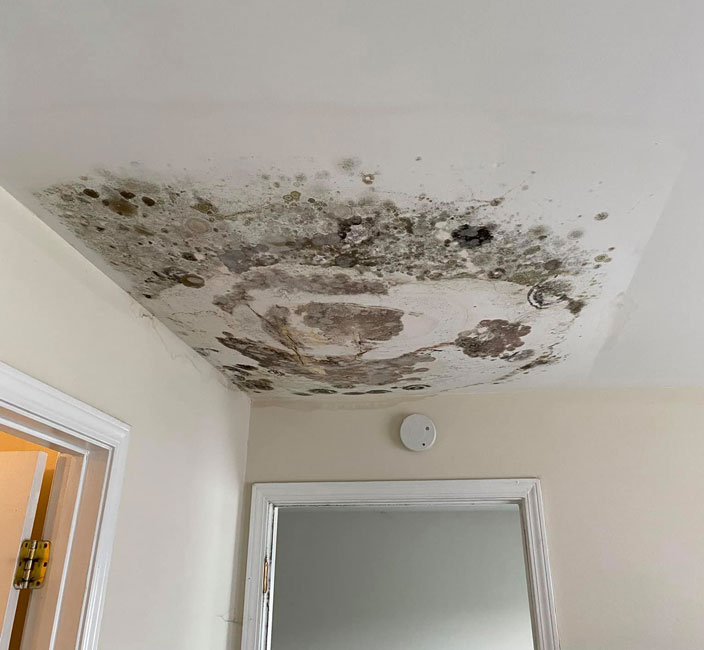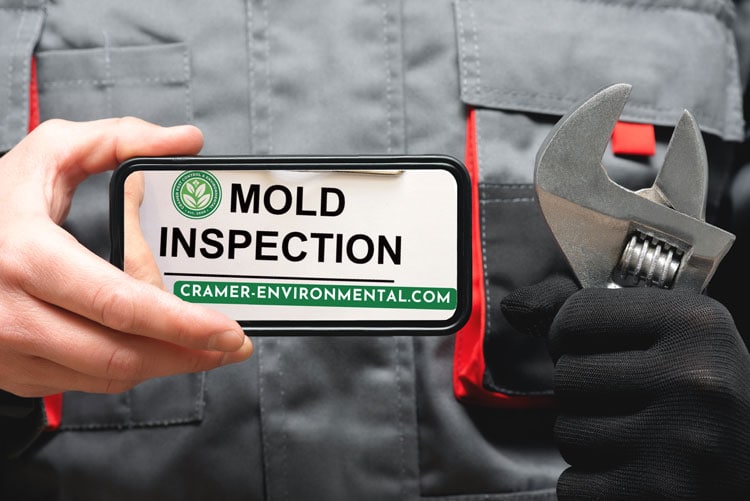Signs of Water Damage on Your Ceiling To Look Out For
We’ve all seen ceilings with the telltale discoloration of old water damage. They often look like funny faces or a topographical map of a faraway land – but in reality the leaks that cause these stains are far less amusing. The average water damage remediation project costs over $3000 – and that number is just the beginning if the problem goes untreated and mold is allowed to develop!
This article will examine common causes of ceiling water damage, signs to look out for, and discuss what steps you need to take for water removal and water damage restoration.
What causes ceiling water damage?
When your ceiling is showing signs of water damage, you should look up for the source of the water! The most common culprits are roof damage, burst pipes, overflowing toilets and tubs, or even condensation in your attic!
Some of these causes are going to be more obvious than others – with leaks that only occur during storms indicating a roof leak, while leaks that happen after taking a bath will obviously point to the bathroom.
No matter the cause, it is important to act quickly, because water damage is no laughing matter. Left unchecked, you can expect serious structural damage or mold growth, so be sure to take any signs of leakage seriously.
Signs of ceiling water damage
At its most extreme, ceiling water damage will be very obvious; water dripping (or pouring!) through a newly created hole in your ceiling is hard to miss! However, there are more subtle signs to watch out for:
Cracked or peeling paint
Your paint is a decent bellwether for what is going on behind your drywall. If a patch of ceiling has suddenly started flaking, cracking, or peeling, then this is a warning sign of moisture problems and merits further investigation!
Water Stains
Water stains tend to look beige or light brown and form ink-blot style blobs on your ceiling. Old stains can be hard to tell apart from new stains – but new stains will feel soft, damp, or even cool to the touch while old stains will feel dry and solid.
Mold growth
This is a clear sign of excess moisture and means you have a problem which needs to be addressed! Mold comes in many different colors and appearances, ranging from blue to black speckles to white or orange fuzz. No matter how it looks, if you spot mold you should be getting on the phone with a specialist ASAP.
Mold poses a long term health risk to you and your family and is difficult to resolve on your own.
Damaged drywall
Usually you’ll notice something else is wrong before you spot damage to your drywall or plaster – but in some cases this is the first sign. If your drywall is soft to the touch or bulging, then you probably have a fairly serious leak going on above your ceiling or behind your walls.
Crown molding or trim separating from walls
If your home’s crown molding or trim begins to peel away from your ceiling, you probably have water damage. As trim pieces absorb moisture they warp, causing it to peel away from the walls. Alternatively, softened drywall may release their hold on the finishing nails that are holding the molding in place.
Sagging ceilings
One clear sign of ceiling damage is sagging! If your ceiling has begun to sag then watch out – it might be about to collapse! Usually the collapse itself isn’t particularly catastrophic – but rest assured you do not want to keep any valuables underneath it.
Musty smell
New and unexplained musty odors are a warning sign of leaks. Slow leaks can create the perfect environment for mold and mildew to grow, but if the leak is small enough there may not be any visible signs. Mold and mildew have a particular smell, think your grandparents’ old basement, and sometimes the smell is the first sign of a developing problem.
What should I do about water damaged ceilings?
Ok, so you’ve identified a water leak somewhere within your ceiling. What should you do next?
Minimize the initial damage
The first thing you should do is remove anything valuable or important from beneath the affected area. There is a possibility that the minor signs of leak that you initially spotted are just the beginning. Leaving your laptop or treasured heirlooms in the area is a recipe for disaster!
Identify the source of the leak
It is important to determine what the source of your leak is in order to decide what to do next. If your roof is at fault, then your options are limited – you’ve got to wait for the rain to stop! However, if you suspect a leaking pipe then you can shut off your home’s main water supply until a plumber is able to fix it.
Take control of the leak
Ceilings are usually made out of drywall and will allow leaks to spread out over large areas. Instead of permitting this to happen, you can make a small hole in your ceiling, allowing the water to drain in a controlled manner.
Using a screwdriver or awl, make a hole beneath where you suspect the leak to be and be prepared with a bucket to catch the impending flow.
This problem is usually noticeable as a musty smell when you turn on your air conditioning. Don’t confuse this smell with the ‘burnt dust’ smell of turning on your heating unit for the first time during the winter season. Instead, this will be a damp, earthy smell that happens while your AC is running.
Dry out the area
This is going to be a bit of a challenge – but it is important to dry the affected area as much as possible to prevent mold from forming. Since the leak is in your ceiling, you likely won’t be able to use towels or a shop vac – so air flow is going to be the name of the game. Use fans and dehumidifiers to reduce indoor humidity in the area as much as possible.
Make some phone calls
Depending on the source of the leak, you will need to either call a plumber or a roofer. Next, you should contact a water damage restoration company – they will have the tools to thoroughly dry the area and prevent mold from forming. Finally, you should contact your insurance company as water damage is often covered by homeowners insurance.
Repaint or replaster
After the problem has been completely resolved you will be free to repaint or replaster the impacted area. You should probably wait to confirm that the repairs have worked before fixing your ceiling – otherwise you risk having to perform this step twice!
Occasionally Look Up For Signs of Trouble
Leaks are relatively uncommon, and because of their infrequency we often are complacent about the risk they pose. However, a major leak may cause thousands of dollars of damage and you need to act fast before that amount spirals upwards.
If you see any signs of water damage on your ceiling it is important to figure out where the leak is coming from, contain the damage as much as possible, and work with a professional water damage restoration company to ensure that the problem doesn’t continue to escalate.




